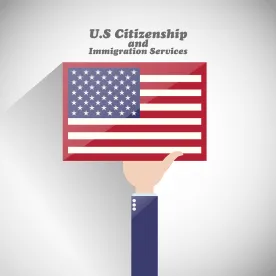The United States Citizenship and Immigration Services (USCIS) has an ambitious goal this year. Its primary objective is to reduce the backlog of cases and its impact on Immigration Services. This past year, USCIS has felt the harmful effects of the COVID-19 pandemic. The pandemic turned what were already significant processing delays into unprecedented backlogs across the entire system. In fact, as of 2022, numbers are very high, with a backlog nearing 5.2 million cases and approximately 8.5 million pending cases.
This is a stark contrast from July 2019, when the backlog was only around 2.7 million. With the increase of millions of cases in only a few years and the inevitable delays it has caused in immigration processing, this new development could bring long-anticipated good news to many applicants who have been waiting for prolonged periods.
Phyllis A. Coven, the seventh Citizenship and Immigration Services Ombudsman (in that role, she identifies issues in the immigration system and makes recommendations to USCIS on how to address these problems), said the worst backlog of all is USCIS’s affirmative asylum backlog, which stands at over 430,000 cases.
Asylum: Defensive vs Affirmative
An asylum is a form of protection that allows an individual to remain in the United States instead of being removed to a country of feared persecution. There are two paths to asylum in the U.S.: the affirmative asylum process for individuals who are not in removal proceedings, and the defensive asylum process for individuals who are in removal proceedings. 8 USC 1158.
What is Affirmative Asylum?
A person who is not in removal proceedings may proactively apply for asylum with the USCIS. An applicant may file an affirmative application for asylum if he or she currently holds a valid immigration status (such as a visitor or student visa or Temporary Protected Status), his or her status has lapsed or expired (except for Visa Waiver Program entrants), or even if he or she holds no immigration status (for example, if he or she entered the country without inspection).
To obtain asylum through the affirmative asylum process, the applicant must be physically present in the United States and apply for asylum within one year of their last arrival in the United States.
USCIS Affirmative Asylum’s Current Backlog
As mentioned, USCIS’ existing asylum system cannot significantly reduce its backlog, let alone keep pace with incoming applications. This delay is having a devastating impact on asylum seekers and their family members. They are losing valuable time in their immigration journey, their jobs, livelihoods, etc.
Therefore, the agency is considering approaches to improve the quality and efficiency of asylum adjudications, leading to a more effective and efficient system.
USCIS proposes the following solutions:
-
Hire more than 4,000 employees by the end of this calendar year and set new, more aggressive “cycle time” goals for fiscal 2023.
-
Identify and group cases to increase efficiencies in interviews and adjudications, prioritize asylum applicants needing immediate protection, and deprioritize non-priority applicants, such as those with other forms of relief available.
-
Consider specialization, interview waivers, and simplifying final decisions to increase case completions while supporting the welfare of officers and applicants.
While hopefully these recommendations will expedite immigration processes and lighten the backlog, asylum is still incredibly challenging.



 />i
/>i

